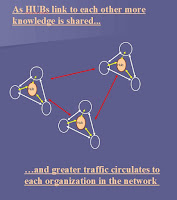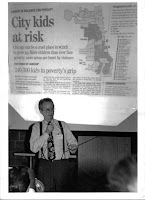On March 20, 2019 I wrote
this article about the role universities could take in growing future leaders, and supporters, of youth tutor/mentor programs. The title was "
Tipping Point - Growing and Supporting Future Leaders"
A couple of weeks ago during a ZOOM reunion with educators I'd met via the #ETMOOC event held in January 2013 we started talking about ChatGPT, which is an artificial intelligence tool used for writing articles. We decided to create a mini MOOC to explore this and help each other learn to use it.
I've never used ChatGPT before but I looked at
this video and decided to give it a test today.
My interest is in how I, or others, could use Chat GPT to rewrite my past blog articles, making them more readable, and more interesting. I used the March 20, 2019 article. After a few prompts, below was the result:
Begin ChatGPT version -
Tutor/mentor programs are essential to helping young people from underserved communities succeed in school and prepare for successful careers. Universities have a critical role to play in building future leaders for these programs and fostering support from businesses and philanthropists to help them grow in more places.
While it's important to equip graduates with the skills and knowledge needed to build and lead mentor-rich youth-serving organizations, it's also essential to recognize that only a few graduates from each university will become leaders and staff in these programs. Most will go on to careers in business, entertainment, medicine, and other fields. However, universities can still play a vital role in supporting these graduates to be proactive in providing ongoing funding to support the few who do become directly involved with tutor/mentor programs.
To achieve this vision, universities could offer a comprehensive four to six-year master's or PhD program, starting in the freshman year of college, designed to train students to become effective tutors and mentors and to build and lead successful youth-serving organizations. This program could include coursework in education, psychology, social work, leadership, grant writing, fundraising, and program management, essential for building and sustaining successful tutor/mentor programs.
Students could participate in on-going practical learning, serving in existing programs and reaching youth as young as elementary school. This service could be tied to coursework being studied on campus at different points over their college career. The program could also offer opportunities for students to connect with local tutor/mentor programs, as well as networking events with business and community leaders who are passionate about education and youth development.
Additionally, universities could provide ongoing post-graduation support to both the few graduates who become directly involved with tutor/mentor programs and the majority who go into other fields. By training all graduates to be proactive in providing ongoing funding and support for these programs, universities can help to create a sustainable network of programs that can make a real difference in the lives of young people.
By investing in the development of future leaders who are committed to this cause and supporting ongoing funding and support for these programs, universities can help to build a strong and sustainable network of programs that can make a real difference in the lives of young people. By working together, we can create a future in which all young people have access to the resources and support they need to succeed in school and in life.
---- end ChatGPT version ----
I think this is a pretty good summary of what I've been trying to say to universities through articles in
this section, and in
this section, of this blog.
Students in high school and college who are exploring artificial intelligence writing tools such as ChatGPT, could do what I did today and pick out articles on this blog and explore ways to rewrite them to help share the ideas with people at their schools and in their communities.
I've only begun my exploration. One thing that ChatGPT did not do was pick up the many images I've embedded in my articles or the links I embed to other articles or other websites. That might be possible, but I don't know (and I'm only using the FREE version).
I'm creating an archive to show my exploration and once I have a few articles I'll share it via my Google Drive so others can see how I asked multiple questions and looked at multiple revisions.
Below is a graphic created by an intern from South Korea, vis IIT in Chicago, in 2013.
View the graphic on
this page and find more articles showing intern work on this blog. These show work interns did between 2006 and 2015 to build and share understanding of ideas I've shared since forming the Tutor/Mentor Connection in 1993.
A blog like this could be at every university and high school in the country (or the world) sharing work students have done to communicate these ideas, using any tool available to them, including ChatGPT.
The key point in all of my articles is that this work needs to be on-going, for multiple decades, and reaching youth in EVERY high poverty area of Chicago and other places. Strategies that support on-going involvement are needed in every city and they need to last beyond the term of any Mayor, Governor or President.
If you're already doing this please share links to your work.



























